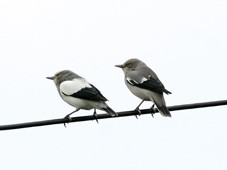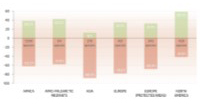
Results from studies across different regions show that, on average, there are projected to be more than twice as many species whose populations and distributions may decline under climate change than the number that are expected to increase. Generalist species are typically likely to increase in population and range, while specialist species are expected to decline. The magnitude of these declines is expected to increase with the severity of climate change.

Recent climate change has already caused species to shift their ranges, with many exhibiting northward shifts (Zuckerberg et al. 2009, Auer & King 2014, Environmental Protection Agency 2014, Virkkala & Lehikoinen 2014, Gillings et al. 2015) and changes in elevation (Archaux 2004, Peh 2007, Zuckerberg et al. 2009, Popy et al. 2010, Maggini et al. 2011, Forero-Medina et al. 2011, Reif & Flousek 2012, Harris et al. 2012, Auer & King 2014).
Further changes in bird distributions are expected in the future; results from studies across the globe show that, on average, there are projected to be more than twice as many species whose populations and distributions may decline under climate change by the end of the century than the number that are expected to increase (Huntley et al. 2008, Barbet-Massin et al. 2009, Hole et al. 2009, Araujo et al. 2011, Bagchi et al. 2013, Langham et al. 2015). These studies use models to determine how species distributions are expected to have changed in response to a range of climatic scenarios.
These results demonstrate the large impact climate change is expected to have on birds across the globe within the next century. In Africa, 62% of species are predicted to lose out (Hole et al. 2009), whilst in Asia it is thought that 88% of species will be negatively affected (Bagchi et al. 2013). This pattern is seen across all regions except North America, where it is predicted that 58.5% of species are expected to gain range by the end of the century (Langham et al. 2015).
This case study is taken from ‘The Messengers: What birds tell us about threats from climate change and solutions for nature and people’. To download the report in full click here.
References
Compiled: 2015 Copyright: 2015
Recommended Citation:
BirdLife International (2015)
There are projected to be more losers than winners under climate change.
Downloaded from https://datazone.birdlife.org/sowb/casestudy/there-are-projected-to-be-more-losers-than-winners-under-climate-change on 22/12/2024